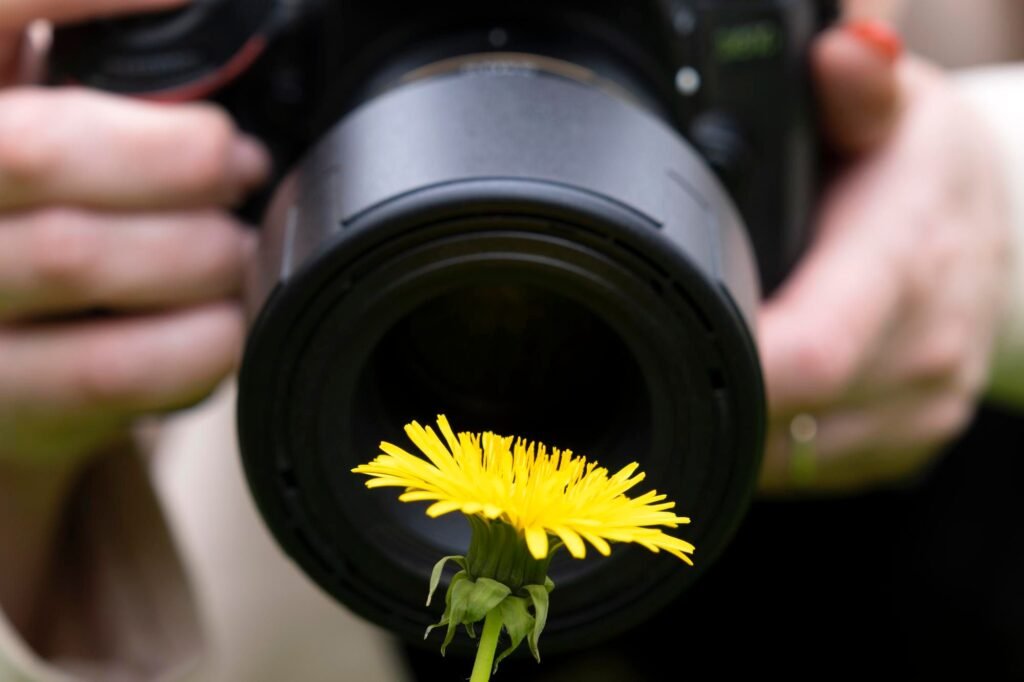Do you ever find yourself marvelling at the intricate details of tiny objects? Macro photography is perfect for capturing the beauty of small things up close and personal. It allows you to explore different worlds and appreciate the beauty of things that go unnoticed. But with so many choices on the market, picking the best gear for macro photography can be overwhelming.
From lenses to lighting equipment, there are many factors to consider. In this blog, we’ll explore the best options for macro photography and make your decision-making process much more manageable. We will explore the different types of lenses available and what features to look for in a macro lens.
We will also discuss lighting solutions such as ring flashes and diffusers, which are crucial in creating stunning macro shots. Whether a beginner or a pro, this blog will provide the knowledge and insights you need to capture stunning macro images. So, if you’re ready to explore the wonderful world of macro photography, keep reading!
Lenses: Choose Wisely
In macro photography, the choice of lens can significantly influence the outcome. A dedicated macro lens is typically the best option for taking a macro photograph. These lenses offer high magnification and sharpness, allowing you to capture even the tiniest details of your subject.
However, other options exist, such as extension tubes or close-up filters. While these options are less expensive than a dedicated macro lens, they may not offer the same level of image quality. It’s essential to consider the pros and cons of each option and pick the one that best fits your needs and budget.
Regardless of which option you choose, patience and attention to detail are essential when capturing stunning macro photographs.
Prime Lens: Get the Best Detail
In photography, the final quality of the image can significantly depend on the appropriate lens selection.
Choosing between a prime and a zoom lens is a crucial aspect to ponder. While zoom lenses offer versatility by allowing the photographer to adjust the focal length, prime lenses offer superior image quality and details.
Prime lenses have a fixed focal length, which may limit the photographer’s range of shots, but provides sharper images with greater detail and clarity. Prime lenses are simpler and more efficient by eliminating the need for complex internal mechanisms to zoom in and out. They also have larger apertures, allowing for a shallower field depth and better low-light performance.
Ultimately, the choice between a prime lens and a zoom lens depends on the specific needs of the photographer and the type of photography they are doing. But a prime lens is the way to go when it comes to achieving the best detail and clarity in an image.
Zoom Lens: Flexible and Convenient
Regarding photography, the lens you choose can make all the difference. One popular and versatile lens option is the zoom lens. Unlike a fixed focal length lens, a zoom lens allows you to adjust the focal length, making it an incredibly flexible and convenient choice for many situations.
With a zoom lens, you can easily capture both wide-angle shots and close-up details without constantly swapping lenses. Plus, you can adjust the zoom quickly and easily, allowing you to react rapidly to changes in your subject or environment. Choosing the right lens for your needs is essential, but a zoom lens is a great option that provides a lot of versatility in one convenient package.
Settings: Essential Tweaks
If you’re interested in taking macro photographs, you’ll want to ensure your camera settings are correct. The best option for taking a macro shot is to adjust your aperture. This setting determines how much light enters your camera and how much of your photo is in focus.
A larger aperture (indicated by a smaller number) will give you a more blurred background. A smaller gap (shown by a more significant number) will make more of the photo in focus. You’ll also want to adjust your ISO, which determines how sensitive your camera is to light. Higher ISOs can help you take pictures in darker environments but can also lead to grainy or noisy images.
With the correct settings in place, you can take stunning macro photographs that showcase the intricate details of your subject, whether it’s a flower, insect, or other small object. So don’t be afraid to experiment with your camera settings and see what works best for your unique photography needs.
Aperture: Control Depth of Field
The aperture is an essential setting you need to tweak if you want to control the depth of field in your photographs. The gap is the opening through which light enters your camera lens. Adjusting it lets you prevent how much of your photo is in focus.
A small aperture, represented by a high f-number, will give you a deep field depth, meaning that almost everything in your shot will be in focus. A large aperture, represented by a low f-number, will give you a shallow depth of field. This will result in a blurred background, making your subject stand out.
Adjusting the aperture can be a great way to get creative with your photos. It’s like looking through a pair of binoculars, where you can adjust the focus on the object in the distance to make it more transparent. Similarly, you can adjust the aperture to control the depth of field and make your subject more striking.
ISO: Balance Light and Noise
Getting the right balance of light and noise is crucial when taking pictures. This is where ISO comes in. ISO is one of the three main settings on your camera, alongside aperture and shutter speed.
It stands for International Organization for Standardization and refers to the camera’s sensitivity to light. The higher the ISO, the more sensitive your camera is to light. However, this comes at the cost of increased noise or graininess in the photo.
The trick is to find the right balance between the two by tweaking the ISO setting. A good rule of thumb is to keep the ISO as low as possible to reduce noise but high enough to capture the light you need. Experiment with different settings to find what works best for you and the lighting conditions you’re shooting in.
Adjust your aperture and shutter speed accordingly, as changes in ISO will affect these settings too.
Shutter Speed: Freeze or Blur Action
When capturing photos of the action, the shutter speed is essential to determine whether you freeze the action or blur it. A fast shutter speed, like 1/1000 of a second, can freeze movement and capture sharp, detailed images. This setting is ideal for capturing sports events, wildlife, or fast-moving subjects.
However, a slower shutter speed is the way to go if you want to create a sense of movement or motion blur. You can make sense of motion in your photos by using a slow shutter speed, like 1/30 of a second. This effect helps capture waterfalls, light trails, or any other subject where you want to emphasize the flow or movement.
Experimenting with different shutter speeds is essential to find the right one that suits your subject and desired effect. By tweaking this setting, you can take your photography to the next level and capture stunning photos that truly stand out.
Accessories: Enhance Your Shots
If you want to take some close-up shots of small objects and capture all the details, then the best option is a macro lens. These specialized lenses allow you to get up close and personal with your subject, capturing fine details and intricate textures that the naked eye can’t see. Macro lenses come in various lengths but typically have a focal length of 50mm, 100mm, or 200mm.
You can choose the best option based on your subject and working distance. Additionally, you can use various accessories to enhance your shots, including macro filters, extension tubes, and dedicated flash units. These accessories can help you overcome limited working distances or low lighting conditions.
However, remember that investing in high-quality lenses and accessories can get quite expensive, so it’s essential to research and determine what works best for your needs and budget.
Ring Light: Perfect for Close-ups
If you love taking close-up shots, a ring light is a must-have. It’s an accessory that enhances the quality of your photos and makes it easier to capture better shots. A ring light is perfect for macro shots of flowers, insects, and other small objects.
It provides a soft and even illumination that helps to highlight the details of the subject you’re shooting. The best part about using a ring light is that you don’t need additional lighting equipment. It can be used as a stand-alone light source and doesn’t require any complicated setups.
Ring lights are also portable, lightweight, and easy to set up, so you can take them anywhere you want to take photos or videos. So, if you add an extra oomph to your close-up shots, invest in a ring light and see the difference for yourself!
Extension Tubes: Get Closer Than Ever
Are you looking to take your macro photography to the next level? Look no further than extension tubes. These nifty accessories attach to your camera body and allow you to get closer to your subject than ever before without needing a dedicated macro lens. Extension tubes come in various sizes, and some can be combined for even greater magnification.
They increase the distance between the lens and the camera’s image sensor, allowing light to hit the detector at a different angle and creating a magnified image. One thing to remember when using extension tubes is that they can reduce the amount of light entering the camera, which may result in longer exposure times or the need for additional lighting equipment. Additionally, the closer you get to your subject, the shallower your depth of field will become, so it’s essential to be mindful of your focus.
But with some practice, extension tubes can open up a new world of close-up photography. Why not give them a try and see what kind of fantastic shots you can create?
Conclusion: Choose Your Setup
After thorough analysis and consideration, it is safe to say that the best option for taking a macro photograph is subjective and depends on the photographer’s preferences and purpose. Whether using a dedicated macro lens, extension tubes, or even a phone camera with a macro lens attachment, the key is experimenting and finding what works best for you. In short, the best option for taking a macro photograph is the one that allows you to capture the beauty and detail of your subject in a way that speaks to you and your artistic vision.
Happy clicking!”
FAQs
What is a macro photograph?
A macro photograph is a close-up photo of a small object or subject, typically taken at a 1:1 scale or more significant.
What equipment do I need to take a macro photograph?
You will need a macro lens or extension tubes, a tripod, and proper lighting to take a macro photograph.
What are some tips for taking an excellent macro photograph?
To take a good macro photograph, use a small aperture for greater depth of field, focus on the eyes of the subject, use a diffuser to soften harsh lighting, and take multiple shots to ensure sharpness.
Can I take macro photographs with my smartphone?
Many smartphones now have a macro mode that allows you to take close-up photos of small objects. You may also purchase external lens attachments to enhance your smartphone’s macro capabilities.






